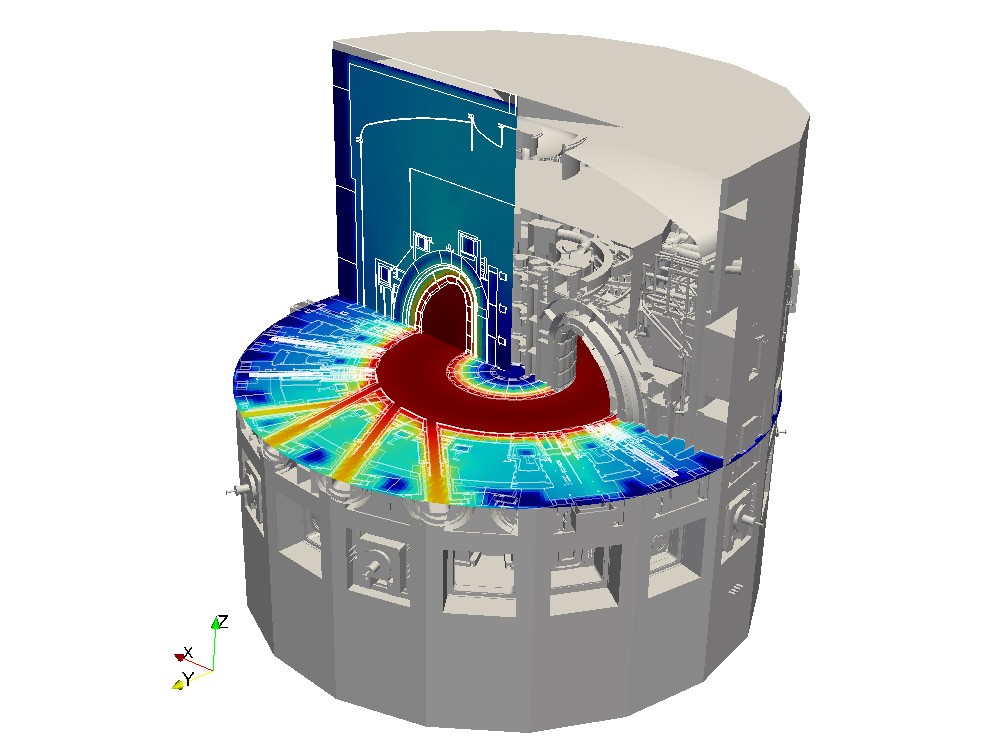A new neutronics model to describe the ITER Tokamak

Image representing the neutron flux across the ITER tokamak.
Computer models are fundamental to studying the radiation inside the ITER device. These analyses have been traditionally performed with partial models of the tokamak, meaning that they represent only a part (normally 40° or 80°) of the whole device. These approaches, although useful for most calculations, are especially limited when one wants to predict global quantities, such as the heating of the poloidal field coils (instead of the heating of a particular point of the tokamak) or radiation maps throughout the machine.
These issues have been solved thanks to the advent of the first 360° neutronics model of the ITER tokamak. Experts from UNED (the Spanish Distance Education University), ITER and F4E have collaborated to develop a computer model named E-lite that allows to remove all the uncertainties related to partial models. The new model is based on seven replicas of a previous 40° model and the inclusion of other parts of the tokamak such as the port plugs and neutral beam injectors. The achievement has been published in Nature Energy.
The 3D contour shows the parts of the tokamak that receive from least to most neutron flux.
Rafael Juárez and Gabriel Pedroche, both from UNED, are the main authors of the paper. Raul Pampin and Marco Fabbri, F4E Technical Officers, Analyses and Codes Group, also contributed to this work.
“This is a big leap forward in neutronics modelling of fusion devices. It allows us to produce estimates of radiation conditions in the tokamak with unprecedented ease and reliability. The very first application has been the update of the so-called radiation maps of the ITER facility, which are a crucial input for the nuclear regulator,” explains Raul Pampin.
Marco Fabbri concludes acknowledging the time invested in order to reach this point. “This is the result of a long journey of modelling improvements over the last 10 years or so, resulting from strong collaborative efforts by the community and important advances in the computer software and infrastructure, that is, the analysis codes and the supercomputers.”